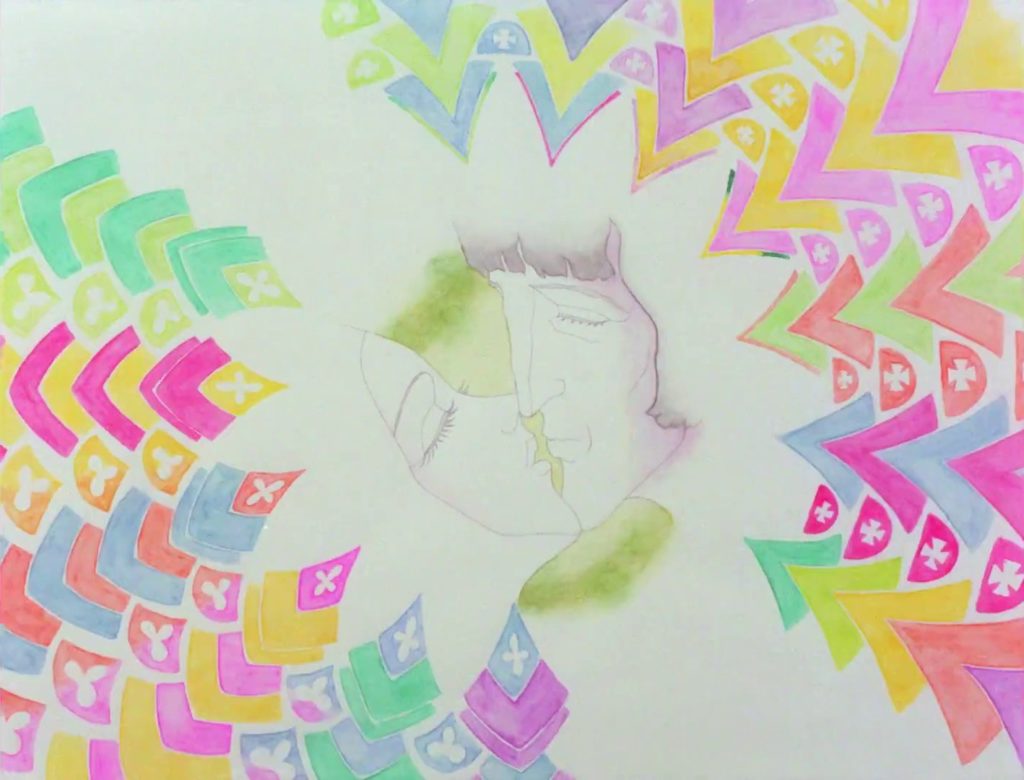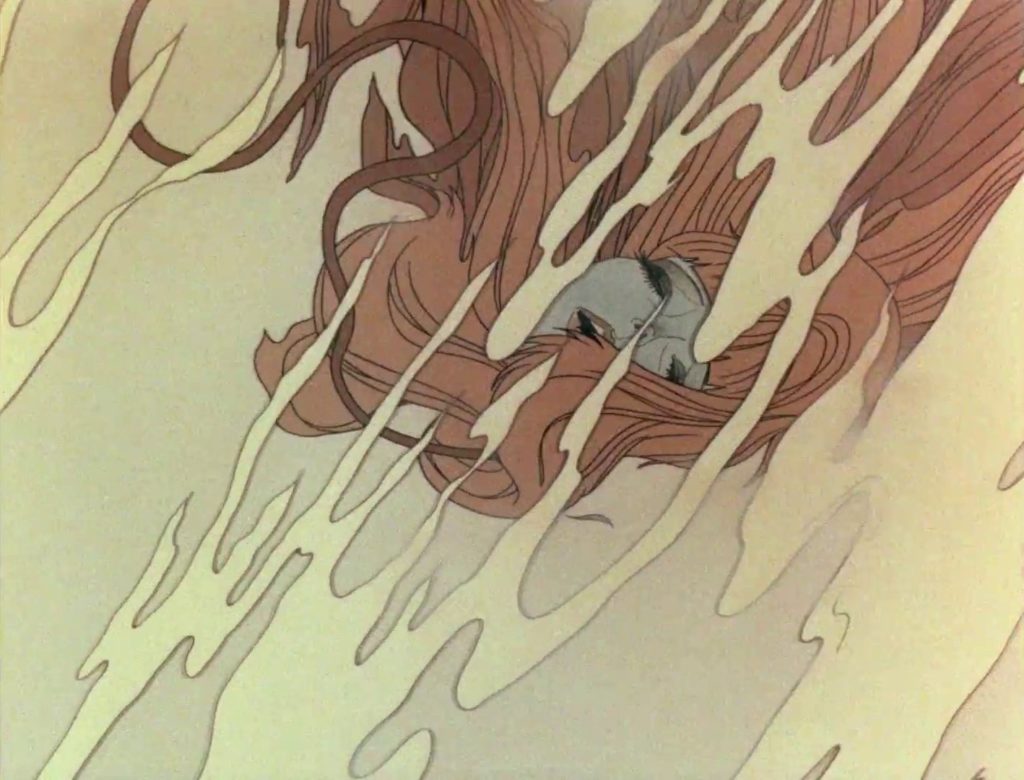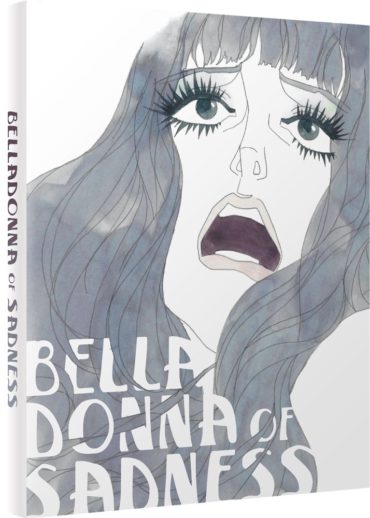Belladonna of Sadness Review
“Out of the crooked timber of humanity, no straight thing was ever made.” – Immanuel Kant
Belladonna of Sadness was the last of three movies in the “Animerama” series co-created by Osamu Tezuka – a series of adult films, the others being A Thousand and One Nights and Cleopatra, which are not released in the UK. While the early films were more erotic in tone, Belladonna of Sadness mixes the erotic with an art house, avant-garde look. This is a film using watercolour pictures, no lip-synching, and lots of violent, sexual, disturbing imagery. The film’s director Eiichi Yamamoto describes as the film as: “Porn, but pure love.”
Adapted from Jules Michelet’s novel Satanism and Witchcraft, the film is set in feudal France and begins with the happy marriage of Jean and Jeanne, but shortly after this union the wicked lord of the land rapes Jeanne, and his soldiers do the same. Later, Jeanne dreams of a Devil who tells her to get her revenge. She falls for the Devil, having sex with him, but doesn’t sell her soul to him. She and Jean become more powerful as the land faces hardship; Jean is made a tax collector, but when the lord decides to raise an army, he cuts off Jean’s hand for not collecting enough money. Jeanne meanwhile uses her powers from the Devil to raise cash from a moneylender, and becomes a powerful rival while the lord is away fighting his wars.
When the lord returns and learns how powerful Jeanne has become, he tries to hunt her down. Jean refuses her sanctuary, so she flees to the countryside where she finally sells her soul to the Devil. Now full of power, she returns to the village while it is under attack from the Black Death. Using her powers she starts to mobilise the survivors to rebel against the lord.

The first thing to mention about the film is that a lot of images used are still shocking 40 years after the film was released. The rape scene occurs in the first ten minutes, and seems to feature Jeanne being torn in two and gushing blood, then the blood turns into bats. This is just one of many surreal and shocking erotic scenes in Belladonna of Sadness. Other scenes depict what look like orgies with human-animal hybrids. These scenes, especially the sexually violent ones involving Jeanne may well put off many viewers, but surprisingly Yamamoto has claimed that one group of people who really enjoyed the film at the time was female students. When he attempted to make a cut of the film that removed the pornographic material in an effort to appeal to more women, it didn’t work, so the porn stayed in.
Whatever you think of the adult material, you cannot get away from the fact that the artwork itself makes Belladonna of Sadness stand out from other anime. Most of the artwork appears to be watercolour pictures. Rather than featuring lots of movement, the vast majority of the film features still images that the actors talk over. The characters don’t move their mouths to speak. Simply by moving the camera, one image can take on multiple meanings. What starts off as a crowd of women in hoods ends up with the hoods becoming the slope of a hill with birds flying over it.

There are also plenty of psychedelic moments in the film, most notably when Jeanne finally sells her soul, which is followed by a scene in which she and the Devil have sex, but the images displaying it is a range of all sorts of random modern images, like cars, famous landmarks, people in clothing at the time the film was made and so on. The film version of Yellow Submarine by The Beatles was an influence and it’s made visible here.
This Blu-ray release comes with plenty of extras: over an hour of interviews with director Eiichi Yamamoto, art director Kumi Fukai and composer Masahiko Satoh, as well as various trailers for the movie, art cards, and a booklet containing information on the movie and an article about the film commissioned especially by All the Anime.

As mentioned, this film is not for everyone: you might be put off by the violent sexual imagery, or the art style might be too experimental. However, it is certainly a style of making anime that is different to anything else released in English, and it is one of the oldest anime releases in the UK. Apart from the forthcoming release of Momotaro’s Divine Sea Warriors that was released in 1945, only The Little Norse Prince from 1968 is older.


